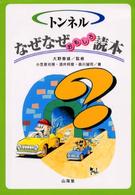- ホーム
- > 洋書
- > ドイツ書
- > Social Sciences, Jurisprudence & Economy
- > Politics, Society, Work
- > social science
Full Description
Migration and Creation in Aztec and Maya Literature provides a new perspective on migration and creation episodes in the Popol Vuh of the Quiché Maya Indians of highland Guatemala, demonstrating that they are largely borrowed from Aztec sources. These findings upend previous interpretations resulting from the widely held belief that the Popol Vuh is the most "authentic" Maya book. Victoria Bricker's careful historical analysis explains the origin of these borrowings, which stemmed from the expansion of the Aztec empire southward from the Central Valley of Mexico into the highlands of what is today the Mexican state of Chiapas and continuing into highland Guatemala as far south as the town of Utatlán, whose rulers then intermarried with members of the Aztec royal family.
This innovative volume explores new ground, comparing Aztec pictorial representations of migration with Maya written descriptions of the same events and showing that they have much in common. Bricker's exploration of creation narratives demonstrates that the Aztec treatment of multiple creations is more coherent than the Popol Vuh version because it describes the end of each creation before embarking on a new creation, whereas the Popol Vuh version refers to the end of all creations only once. Bricker also provides a new interpretation of creation texts from the archaeological sites of Quirigua and Palenque that challenges models suggesting that the Precolumbian Maya, like the Aztecs, believed in multiple creations. Students of Latin American history will find fresh insights regarding interactions and cultural contact in Late Prehispanic Mesoamerica in Bricker's study.
Victoria Bricker, one of the most accomplished scholars in the field of Mesoamerican studies, presents a fascinating hypothesis about creation legends in this new book. Synthesizing references to Mesoamerican migration and creation accounts in the Colonial period and ethnographic literature, she concludes that the multiple creation events recorded in the Popol Vuh, a colonial-period Quiché Maya text, were derived from Central Mexican traditions. Bricker finds no evidence for multiple creation events in Classic period Maya texts, and suggests that the narrative recorded in the Popol Vuh was probably transferred from the Aztec outpost in Zinacantán, Chiapas, to Quiché nobility, who aspired to increase their status by linking their creation narrative to Aztec accounts. This book provides a stimulating new look at the exchange of ideas across Mesoamerica, and will certainly lead scholars to reexamine the often-claimed link between the Popol Vuh and Classic Maya iconography.
—Dr. Susan Milbrath, Emeritus Curator of Latin American Art and Archaeology Florida Museum of Natural History, University of Florida, Gainesville
This is an extraordinary book. Only Victoria Bricker-with her mastery of Maya linguistics, hieroglyphics, and colonial sources, and her knowledge of Aztec texts-could have compared Aztec and Maya creation literature in the probing and thoughtful way she has. The short chapters, each with its clear focus, carry her analysis naturally forward to a deeper understanding of the Popol Vuh and, indeed, much migration and creation literature in Mesoamerica.
—Dr. Elizabeth Hill Boone, Professor Emerita, Tulane University
Contents
Figures - Preface - Acknowledgments - Introduction - On Translation - Aztec Migrations - Migration in The Popol Vuh - Migration in the Books of Chilam Balam - Aztec Creation - Creation in the Popol Vuh - Creation in Tzotzil Oral Tradition - Creation in the Book of Chilam Balam of Chumayel - Creation in Precolumbian Maya Inscriptions - External Influences on Maya Migration and Creation Literature - References - Index.








